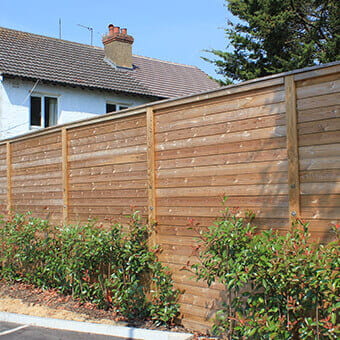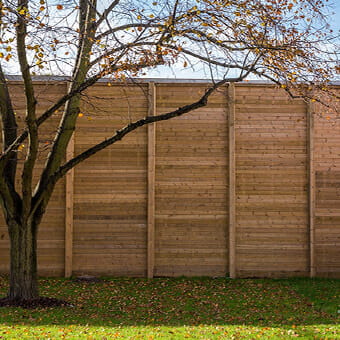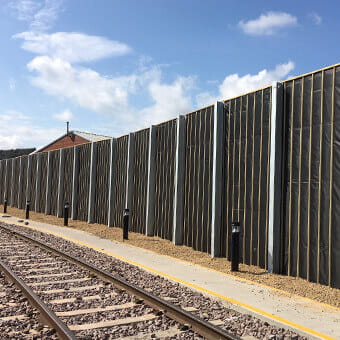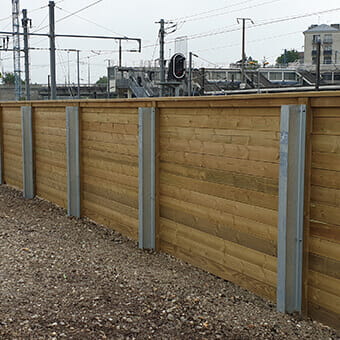Our other sites:
Air source heat pumps (ASHP) and ground source heat pumps (GSHP) are becoming more common as a source of energy provision in homes and businesses. While they offer good sustainability credentials, unfortunately the noise they produce can cause disruption to neighbouring properties compared to traditional heating sources. This means that during the planning and design phases of a commercial property, often a noise consultant or an acoustician will be involved in determining the location and proposing any tactics for noise mitigation regarding GSHP and ASHPs. Due to an air source heat pump needing good air circulation to function, they cannot be covered, however, an acoustic enclosure for an ASHP is a good solution for reducing noise. An additional benefit of an acoustic enclosure is that it provides a screen for the machinery, improving your view and reducing the chance of vandalism.
What is an acoustic enclosure?
An acoustic enclosure is a structure or room built around the noise source to ‘trap’ the noise it produces within the confined area of the enclosure. The enclosure will have a gate for access, which should be made from the same material as the walls to produce the same noise reduction effect. Sometimes, one side of the enclosure is left open as four walls may actually increase the noise by creating an echo chamber. This also prevents blocking the airflow to the pump. The design will be dependent on what the noise consultation reveals as the best solution for the type of noise you are trying to combat. Our acoustic barriers are supplied in kit form, constructed from boards, posts, and rails, to ensure a perfect ‘airtight’ fit on site to provide the best chance at noise reduction. Kit form acoustic barriers are typically lower in price than modular systems as they have fewer steps in the manufacturing process, and are easier to adjust and cut down to size on site. Acoustic enclosures are made from the same materials as acoustic barriers and installed in the same way. The enclosure can be square, rectangular, or even slightly curved.
What is an acoustic enclosure made of?
Typically made from the same materials as an acoustic barrier, an acoustic enclosure can be made from timber, metal, concrete, brick, or acrylic/Perspex. Keep in mind that often, louvre features will be needed to provide good airflow, and this may be more difficult and expensive to achieve with anything but timber. Depending on the height, ground conditions, and wind loading, the posts will either be made wholly from timber, or have an additional steel spur post, or be made entirely from steel.
Are acoustic enclosures a new solution because of ASHPs?
No, acoustic enclosures like those used to reduce noise from ASHPs have been part of our design and supply solutions since 2004. These enclosures are not limited to ASHPs but are also used in various other applications, such as CRAC and CRAH systems used in data centres, and cooling systems in supermarkets or commercial premises.
What noise reduction can I expect?
Jakoustic® Absorptive, our absorptive acoustic barrier, is an ideal choice for an acoustic enclosure around an ASHP or GSHP. It is recommended for enclosed spaces, as with its absorptive mineral fibre layer, it keeps noise within the walls rather than bouncing sound waves back into the open. Reducing noise by up to 32dB, this solution more than halves the 60dB of noise produced by the average heat pump; a considerable difference can be noticed with our absorptive acoustic barrier. Remember that during colder weather, ASHPs have to work harder to convert the cold air, so they tend to be more noisy during the winter. An important point to realise is that the science of soundproofing means that even a 10dB reduction in sound levels is perceived as halving noise levels. So an acoustic enclosure makes a bigger difference than you may think.
How tall does the acoustic enclosure have to be?
The acoustic enclosure should be at least as tall as the heat pump, and generally taller to reduce the sound waves that rise. It should be no higher than an average garden fence unless it is particularly tall or you have multiple heat pumps, making it noisier. Planning permission should not be required for an acoustic enclosure at 2m high or below. A sound report will determine the height that the enclosure will need to be as other environmental factors outside of the enclosure will have an impact on its performance.
Why choose a Jacksons acoustic enclosure?
We have been manufacturing acoustic barriers since 2004, and our product has not changed, due to its effectiveness and popularity. Made from timber, they provide a natural aesthetic that blends into most environments and are frequently used in domestic properties to reduce road noise and commercial activity. Using our acoustic barriers around an ASHP or GSHP will be no different. If you’re worried about the longevity of timber, you’re covered with our 25 year guarantee against rot, insect attack, and manufacturing defects. Sustainability and quality are key drivers for our business, and our guarantee proves this. Only the best and specific types of timber are selected for use in our products, which is then kiln dried and pressure treated with our unique formula. Our products are Made in Britain. By choosing a Jacksons product, you’re supporting a British business which is still family-run since its inception in 1947. Not only this, but any issues are dealt with by us, quicky and efficiently. No waiting months for a solution coming from overseas!
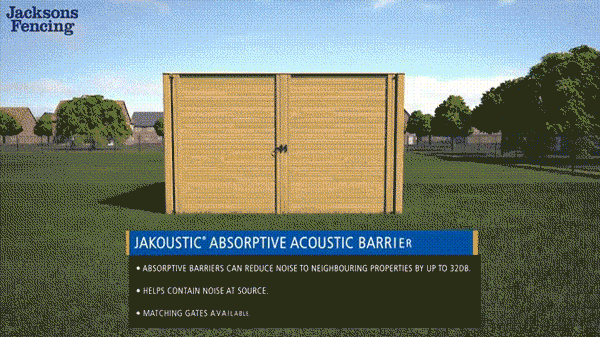
How much will an acoustic enclosure cost?
To get the best out of a noise barrier, certain requirements must be understood and met, including the type of noise, the distance between the noise source and receiver, and more. Finding a price online without employing a noise consultant or having a conversation with us is a red flag. Noise comes in all shapes and sizes, as should the solutions to combat it. Justin, our Acoustic Solutions Manager explains more in our video. Contact Justin and the rest of the acoustic team here.
Examples of acoustic enclosures
We have installed a number of acoustic enclosures for various purposes. Read about an installation for an energy supplier.

Related products
Jacksons Security has a range of products relating to this article, all complete with our 25 year service life guarantee. If you cannot find the item you are looking for, please do not hesitate to call our friendly sales team.
Top
